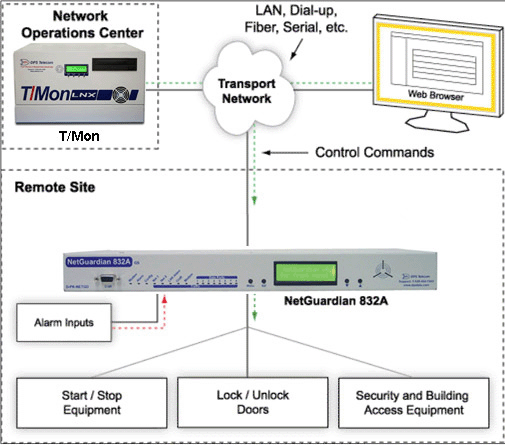What Is Advanced Telemetry? What Features Do I Need?
At a very basic level, a telemetry system will feature some inputs that trigger an alarm when a specific event occurs. This alarm is then forwarded to you or your NOC, where you respond and address the problem.
This simple system works OK and displays the overall idea behind a telemetry system. However, telemetry monitoring systems are capable of much more - which is where advanced telemetry comes in.
 Remote telemetry monitoring provides superior network visibility.
Remote telemetry monitoring provides superior network visibility. What is Advanced Telemetry?
Advanced telemetry is taking a basic alarm monitoring system and adding more advanced features to build a better system that is capable of more. Advanced telemetry units are easier to configure, give you more powerful monitoring tools, and provide you with more effective alarm notifications.
Here are 5 sample features that you can find on many advanced telemetry systems:
- Graphical Web Interface - The easiest and most straightforward way to manage alarms is a web interface. A graphical display of your alarms can really make a difference when it comes to effectively monitoring alarms. They're also a great tool for editing and configuring alarm points.
- Control Relays - Control relays allow you to remotely switch equipment on and off. This may seem ridiculously simple, but it can have some pretty big impacts on your network. The next time some equipment jams up at a site that's an hour away, you won't have to waste a few hours driving out there. A control relay let's you reboot equipment from your office - meaning you get the same results without wasting all that time and money.
- Analog Inputs - Not every alarm condition can be represented by a digital "on" or "off" signal. Analogs let you monitor conditions where knowing real time values are critical. Advanced telemetry systems will give you analog inputs that let you monitor things like temperature, battery power, input voltage, humidity, etc.
- Derived Alarms & Controls - Derived alarms are alarms that occur whenever a user-defined combination of events occur. Perhaps a power failure at a site and a low battery alarm are only minor alarms when received individually. But the combination of both alarms together should be reported as a critical alarm.
Derived controls add to this notification system by automatically responding to derived alarms. For example, if the above scenario occurs (commercial power failure and low battery power), a control relay can be latched that starts a generator. This automatically stops network threats, protecting your network and keeping both you and your customers happy. - Nuisance Alarm Filtering - No one likes being spammed with useless information. If your team is just flooded by unimportant alarms, it becomes a lot easier to miss the critical ones. That's why an advanced telemetry system is going to filter out the "nuisance" alarms - so you only see the important ones. Advanced telemetry monitoring is supposed to improve visibility of your network, not impede it.
Learn More About Advanced Telemetry
These 5 features are only a small sample of what an advanced telemetry system can really do. You can learn about advanced monitoring features by taking a few minutes to download and read the following white papers:
Related Topics:
Video Telemetry
Telemetry Units:

